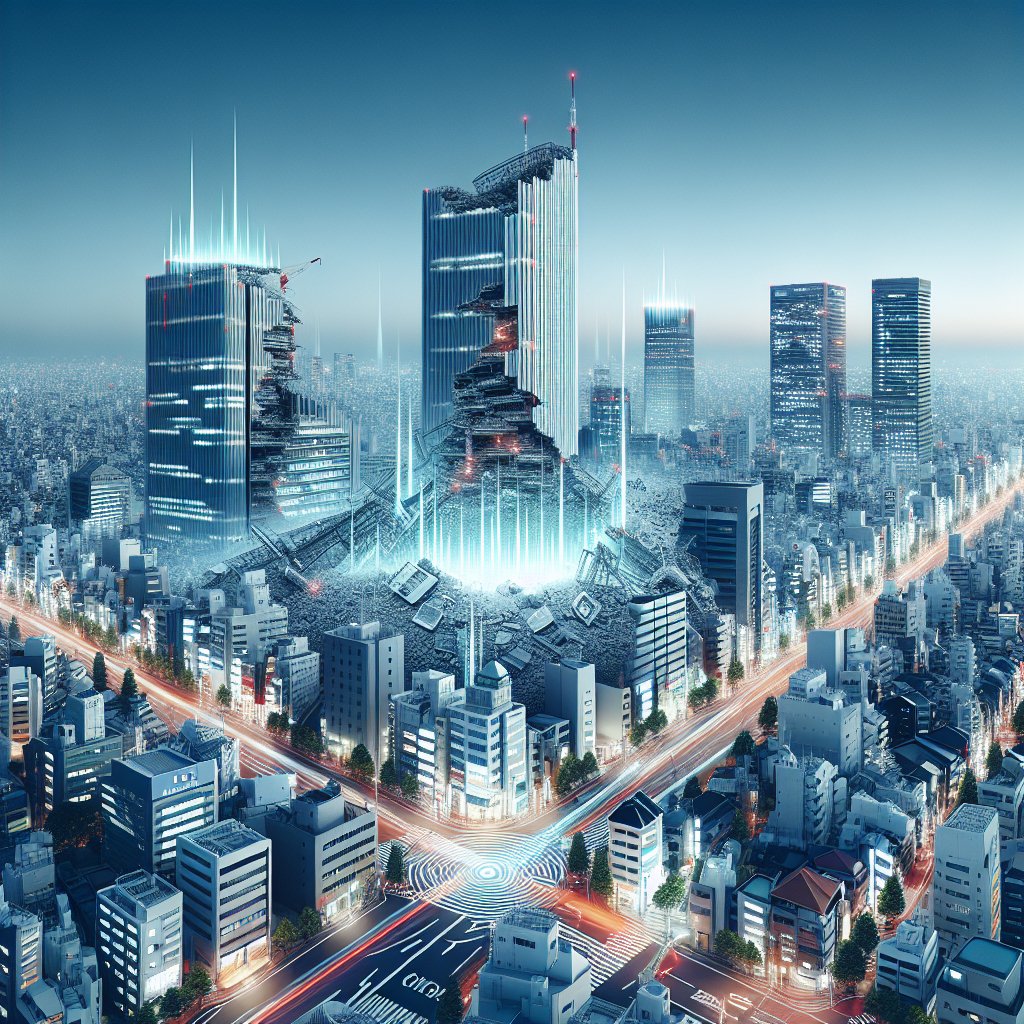Tokyo, the bustling capital of Japan, is not only known for its vibrant culture and technological advancements but also for its meticulous earthquake preparedness strategies. As a city located in one of the most seismically active regions in the world, Tokyo has developed a comprehensive approach to mitigate the risks associated with earthquakes. This article delves into the various measures and systems in place that make Tokyo a model city for earthquake preparedness.
Historical Context and Seismic Activity
Japan’s geographical location on the Pacific Ring of Fire makes it particularly susceptible to seismic activity. Tokyo, being the heart of Japan, has experienced its fair share of devastating earthquakes throughout history. The Great Kanto Earthquake of 1923 is one of the most significant events that shaped the city’s approach to disaster management. This catastrophic earthquake resulted in widespread destruction and loss of life, prompting the government and city planners to rethink urban development and disaster preparedness.
Since then, Tokyo has been at the forefront of earthquake research and preparedness. The city experiences frequent tremors, which serve as constant reminders of the potential for larger, more destructive earthquakes. This historical context has driven Tokyo to invest heavily in infrastructure, technology, and public education to ensure the safety and resilience of its residents.
Infrastructure and Building Codes
One of the key components of Tokyo’s earthquake preparedness is its stringent building codes. The city has implemented some of the most rigorous construction standards in the world, designed to withstand significant seismic forces. These codes are regularly updated based on the latest scientific research and technological advancements.
Modern buildings in Tokyo are equipped with advanced engineering techniques such as base isolation and damping systems. Base isolation involves placing a building on flexible bearings that absorb seismic energy, reducing the impact on the structure. Damping systems, on the other hand, use devices like tuned mass dampers to counteract the motion caused by an earthquake. These innovations have been instrumental in minimizing damage during seismic events.
In addition to new constructions, Tokyo has also focused on retrofitting older buildings to meet current safety standards. This proactive approach ensures that even historical structures are better equipped to withstand earthquakes, preserving the city’s cultural heritage while prioritizing public safety.
Emergency Response and Public Education
Tokyo’s earthquake preparedness extends beyond infrastructure to include comprehensive emergency response plans and public education initiatives. The Tokyo Metropolitan Government has established a robust disaster management system that coordinates with various agencies and organizations to ensure a swift and effective response in the event of an earthquake.
Regular drills and simulations are conducted to test the readiness of emergency services and the public. These exercises help identify potential weaknesses in the response plan and provide valuable training for first responders. The city also utilizes advanced technology, such as early warning systems, to alert residents of impending seismic activity, giving them crucial seconds to take protective measures.
Public education is another critical aspect of Tokyo’s preparedness strategy. The government and various organizations conduct awareness campaigns to educate residents on earthquake safety measures. Schools and workplaces regularly hold drills to ensure that everyone knows how to respond during an earthquake. This emphasis on education empowers individuals to take proactive steps in safeguarding themselves and their communities.
Community Involvement and Resilience
Community involvement plays a vital role in Tokyo’s earthquake preparedness efforts. Local communities are encouraged to form disaster preparedness groups that work together to develop localized response plans. These groups often conduct neighborhood drills and workshops to ensure that residents are familiar with evacuation routes and emergency procedures.
The sense of community resilience is further strengthened by the presence of volunteer organizations that provide support during and after an earthquake. These groups assist with search and rescue operations, distribute supplies, and offer emotional support to those affected by the disaster. The collaborative spirit within Tokyo’s communities enhances the overall effectiveness of the city’s preparedness measures.
Technological Innovations and Future Challenges
Tokyo continues to leverage technological innovations to enhance its earthquake preparedness. The city invests in cutting-edge research and development to improve early warning systems, structural engineering, and disaster response technologies. These advancements not only benefit Tokyo but also contribute to global knowledge and practices in earthquake preparedness.
Despite these efforts, Tokyo faces ongoing challenges in maintaining and improving its preparedness strategies. The city’s growing population and urbanization present new risks and complexities in disaster management. Additionally, climate change and its potential impact on seismic activity add another layer of uncertainty that Tokyo must address in its future planning.
In conclusion, Tokyo’s comprehensive approach to earthquake preparedness serves as a model for cities worldwide. Through a combination of stringent building codes, advanced technology, public education, and community involvement, Tokyo has created a resilient urban environment capable of withstanding the challenges posed by seismic activity. As the city continues to evolve, its commitment to safety and preparedness remains unwavering, ensuring the well-being of its residents and the preservation of its vibrant culture.












